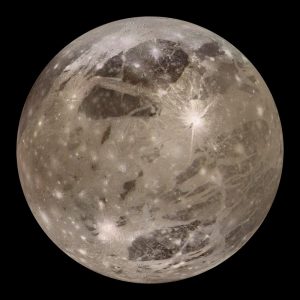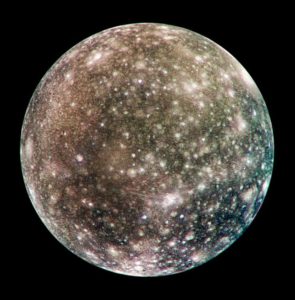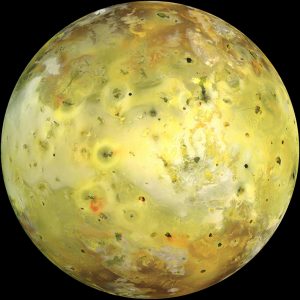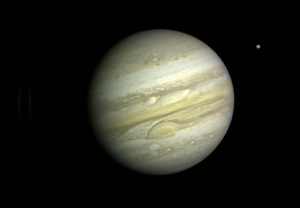
Jupiter has four large moons that can be seen from Earth in small telescopes. Nearest Jupiter is Io (pronounced ”I-oo”), then comes Europa, Ganymede and outermost is Callisto. All, except Europa are larger than the Earth’s Moon.
Io is a unique moon, because it has many active volcanoes that often erupts. One would expect these moons to be very cold, but tidal forces from Jupiter and the other three large moons heat from Io within. This heating causes the interior of Io to melt.
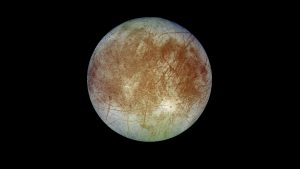
Europa is also heated by tidal forces but to less extend. The moon probably has a rock core surrounded by a deep ocean of liquid water and a thick ice crust. Some theories speculate that a deep and heated ocean supports formation of life
There are two space missions planned going to the moons of Jupiter. The first to be launched in 2020.
Jupiter is the largest of the planets in the Solar system with a diameter of
139 822 km. This is equivalent of 22 Earths side by side across the diameter of Jupiter. The weight of Jupiter is 318 times that of the Earth and it takes 1321 Earths to fill the volume of Jupiter.
Jupiter has a lot of moons, of which the largest is slightly larger than the planet Mercury and the fourth largest is of same size as the moon of the Earth. Jupiter has a large red spot caused by a gigantic storm weather. It has been active for at least 350 years
Jupiter’s distance to the Sun is 5,2 times the Earths distance and it takes 12 years to complete its orbit around the Sun. Jupiter is the planet with the shortest day of 9h 55min.
The Danish astronomer Ole Roemer achieved world fame in 1676 when he deduced the finite speed of light, needed to explain his observations of the changes in the orbital period of the moon Io.
